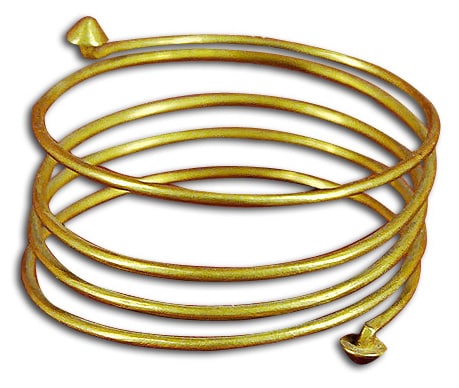A
torc is an ancient Celtic form of neck ring. Although items from as
early as 1800 BC have been found in Egypt that resemble torcs, the name
is commonly used for bronze, iron or golden neck rings from the European
Iron Age. These neck rings developed from simple rings into elaborately
decorated ornaments with or without rich terminals. Most Celtic torcs
have been found in France but there is an extremely wide spread of torc-
like ornaments encountered throughout excavations from Spain to the
British Isles and Scandinavia and from Persian lands to Egypt.
The Roman author Pliny writes that torcs were part of the Celtic battle-dress but excavations have revealed mainly women and girls wearing torcs.
 |
| Celtic torc from the Iberian peninsula showing typical celtic chased motivs |
Iron Age grave sites show us corpses that were fully dressed and ornamented. This allows us to form a detailed picture of jewelry worn in those days. The most widespread type of jewelry was the safety pin used to fix clothing: the fibula. Most commonly made from bronze but also found in iron, silver and gold this garment fastener is found in large numbers. Finger and toe rings were rare, more common were bronze and some gold and silver bracelets and cast bronze solid armlets, cast with the lost wax technique and decorated with enamel and glass. Red enamel in particular popular among the Celts. Torcs are another typical ornament found in Celtic graves, mainly female ones. This item developed from a plain iron ring to elaborately decorated neck rings in gold.



